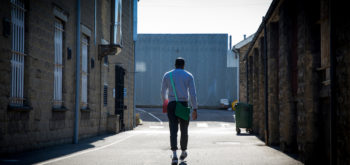Picture this. Mercy arrives alone at the Magistrates’ Court. David, her ex and the father of their twins, is already there. He though is chatting with his solicitor. Mercy, feeling terrified at the prospect of a three day court hearing, leafs through the 700 page bundle of evidence.
- Read Liz’s blog HERE
Knowing their case is on next, she tries to remember what she has read on various websites about the court process. She pulls from her bag the Bar Council’s Guide to Representing Yourself in Court and re-reads the small section on family law. Then, David’s barrister arrives. David and his legal team huddle together. On David’s nod, his barrister approaches Mercy. David has made an offer to settle which is far from what Mercy feels to be best for the children. She looks about. Her heart thumps. She feels sick. What should she do?
Well she’s stuffed basically.
She either accepts the offer without having any form of independent legal advice. Or, she is forced to conduct a long and complex hearing where, alone and unaided, she will have to present her case, assimilate evidence, give evidence and cross-examine her ex (and maybe others if there is medical and other evidence at issue). Oh yes, also, she may have to argue a point of law referring to case law and legislation.
So how can this be fair?
Both parties with legal advice and representation: that’s fair. Or even both parties without legal advice and representation: that’s far from ideal, but at least is fair. But what is unfair is this regression into a two-tier system caused by the Government cuts that have taken some proceedings about children outside the scope of legal aid. The result is that only the wealthy are able access advice and representation in cases concerning their children.
Last week www.thejusticegap.com reported that 46% of people seen by magistrates in the family courts are self-represented litigants. That is, people like Mercy above, who are part of a new generation of DIY lawyers. The majority of magistrates in the survey felt this increase was leading to delays and injustice. This must be particularly so when those litigants face language barriers, have learning difficulties, mental health problems and/or other additional needs as well.
The Children Act 1989 makes the child’s welfare paramount in any decision made by the court. It is difficult to see how that can be maintained when a parent is putting his or her case to the court unaided.
Also, there is a principle against delay in the Act. Again, how can delay not occur when litigants are dealing with their own cases without advice? All this has such huge potential to create injustice to the parties but more importantly, to the child or children at the centre of proceedings.
I know some cuts in legal aid had to happen. But they should not have been made in any area of law where children are the subject of the proceedings.
Equality of Arms. My foot.







